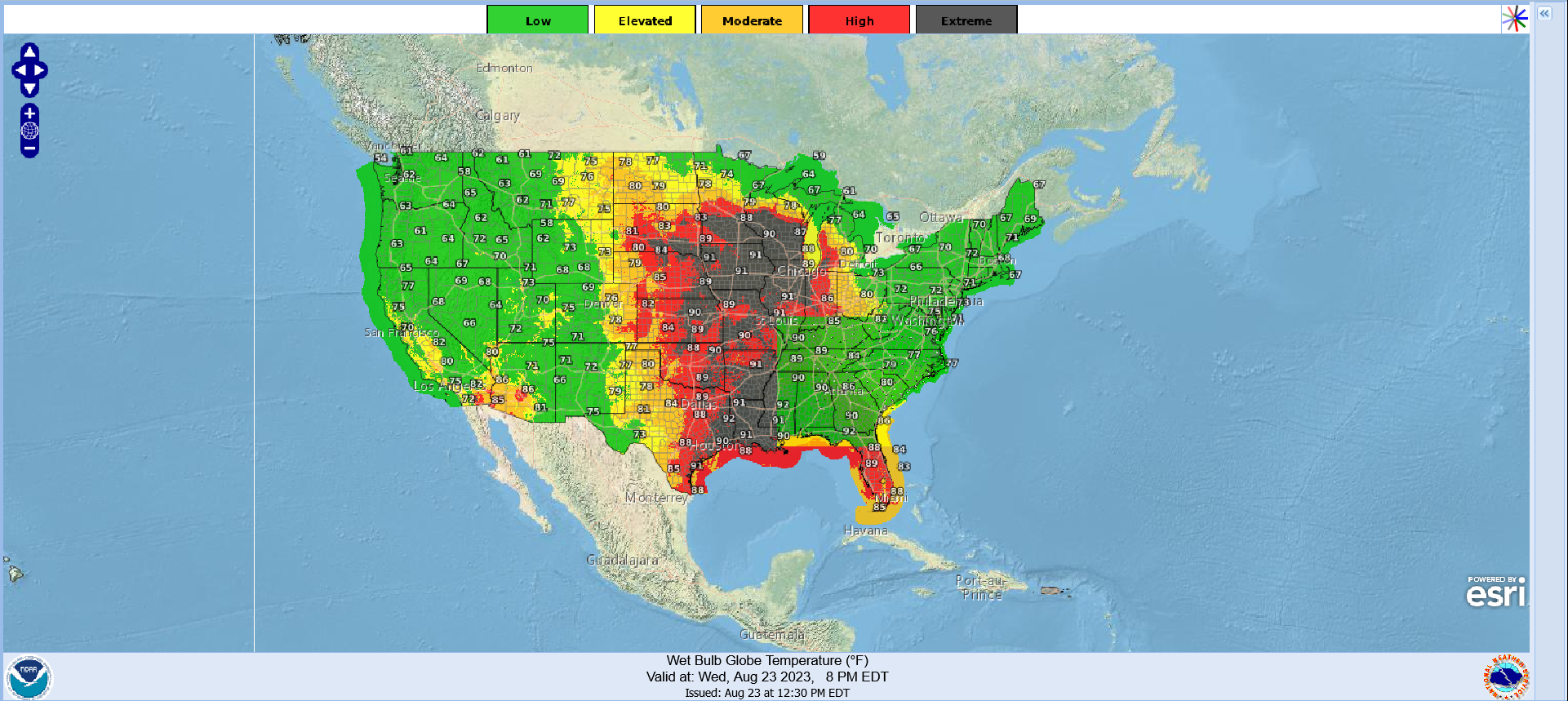We tend to think of the Internet as an immaterial object, but websites exist in the real world in the form of rows of servers that never shut down, filling data centers that need to be cooled down to prevent technical failures. Operators such as Amazon, Google , Meta and Microsoft use a variety of systems to do this: the most energy efficient ones – such as cooling towers – typically evaporate water to cool the air circulating in buildings.
DATA CENTERS AND DROUGHT
With drought spreading across the globe, battles are emerging between data center operators and adjacent communities over local water supplies in places like Chile, Uruguay and parts of the US Southwest. In the north of Holland, public outrage erupted last year when a local news agency reported that a Microsoft data center complex was consuming more than 4 times the amount of water the company had previously disclosed.
Some of northern Europe's colder and wetter hubs, such as Ireland and the Netherlands, have stalled development of new centers due to concerns over energy use, leading companies to look further afield. Operators of hyperscale data centers – those with more than 5,000 servers – are migrating to places where water is abundant, such as Norway, but also to drought-prone places, such as Italy and Spain, where energy is more affordable (and where extreme heat is becoming the norm).
HOW MUCH WATER DO DATA CENTERS CONSUME?
While data centers have undergone scrutiny about their electricity usage, little is known about their water usage, even from the tech companies themselves. A survey conducted last year by the consultancy Uptime Institute found that just 39% of data centers also tracked their water usage, a 12% drop from 2021. Tech companies have in the past refused to disclose information on the energy and water consumption of individual centres, arguing that those data are a trade secret.
Over the past two years, Google, Meta, and Microsoft have begun publishing their total water usage across their operations, but they don't break down the number by business unit, or use standardized metrics. Bluefield Research has estimated that data centers use over a billion gallons of water per day, including water used for power generation.
WHAT THE EUROPEAN UNION WILL DO
Governments are starting to ask for more information. From March 2024, the European Commission will require operators to disclose wide-ranging data on their energy and water consumption to the public. In the UK, utility Thames Water is studying how much water data centers use in London and, depending on the results, may adjust its pricing model for water-intensive activities.
“Identifying which water-intensive customers the data centers are hasn't been easy,” said John Hernon, who is leading the investigation. Operators often use shell companies to apply for planning permits, and from the outside a data center can look like any department store or factory.
CALCULATION POWER AND WATER CONSUMPTION
Arman Shehabi, a researcher at Lawrence Berkeley National Laboratory in California, best known for a landmark paper on energy use in data centers, thinks data centers could be contributing to water shortages as droughts get longer and deeper. intense. Part of the problem, he explained, is that data center operators "usually ask last at the table," straining the system by demanding access to scarce water, after agricultural interests and local communities they have already worked out a plan. “Everyone will experience it,” he added.
Companies say data centers are becoming more energy efficient, but the increase in overall demand for computing power is outpacing those gains. The rush to build large language models used in generative AI has created an increased demand for more powerful processors. The specialized chips required for artificial intelligence, known as accelerators, emit so much more heat than generic chips that "data center operators are having to completely rethink their cooling systems," commented Colm Shorten, data sustainability expert center at real estate investment firm JLL.
Shaolei Ren, an associate professor of electrical and computer engineering at the University of California Riverside, conducted research estimating that training GPT-3 in Microsoft's US data centers directly consumed 700,000 liters of water in about a month, not including the indirect use of water associated with electricity generation. The team also calculated that each short conversation of 20 to 50 questions and answers with ChatGPT consumes approximately 500 milliliters of water.
WHAT THE COMPANIES WILL DO
“Microsoft is investing in research to make large systems more sustainable and efficient, both in training and in application,” a company spokesperson said in an emailed statement. “Climate change is a real and urgent challenge, with an increasingly serious impact on our businesses, our communities and the ecosystems that support them”. OpenAI did not respond to requests for comment.
Shorten said that over time data centers will need to fundamentally change the way they dissipate heat. “The gold standard is a process called immersive cooling, where servers are immersed in a special fluid that transfers heat from the chips,” she explained. For now, operators are likely to opt for a hybrid model, where a high-performance section of the data center will be liquid-cooled, while the rest will continue to use air conditioning."
Amazon Web Services, Google, and Microsoft have all made water stewardship commitments, promising to use more unpotable and recycled water and replenish more water than they consume operationally by 2030. That's the equivalent of carbon offsetting planting trees, something that looks good on paper, but may not directly benefit communities affected by data centers, because water can only be replenished in places where it's easy to do so.
